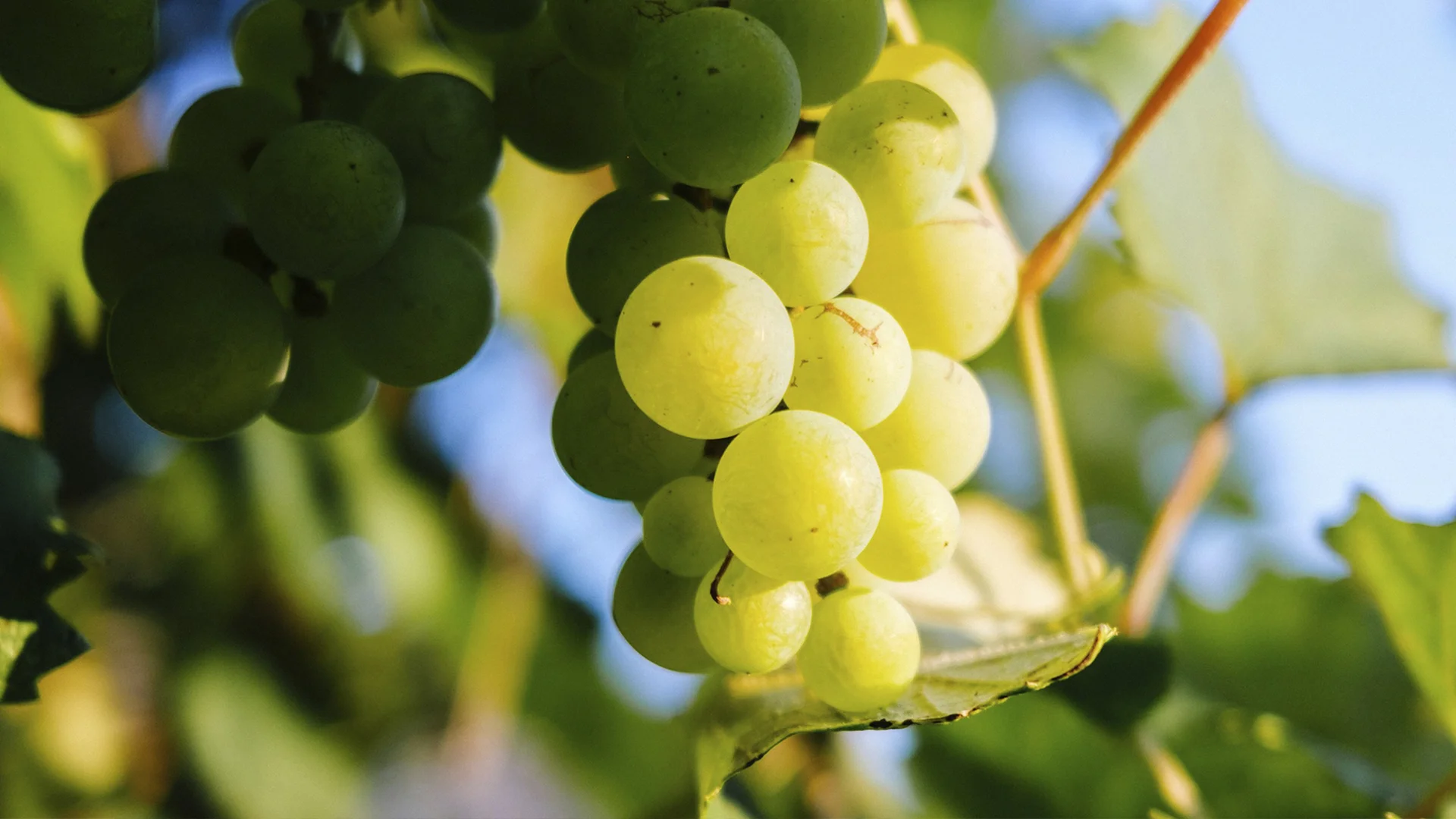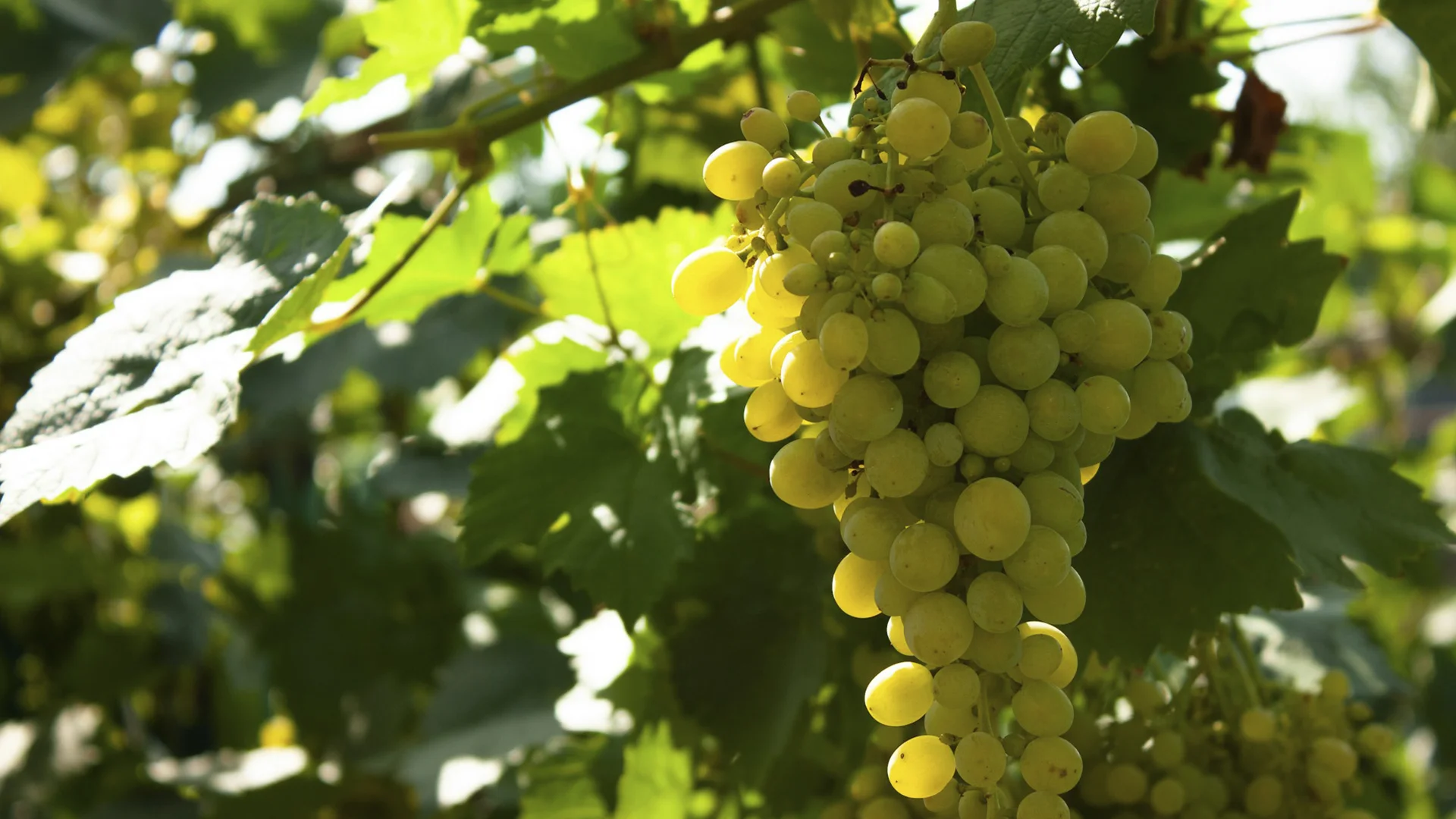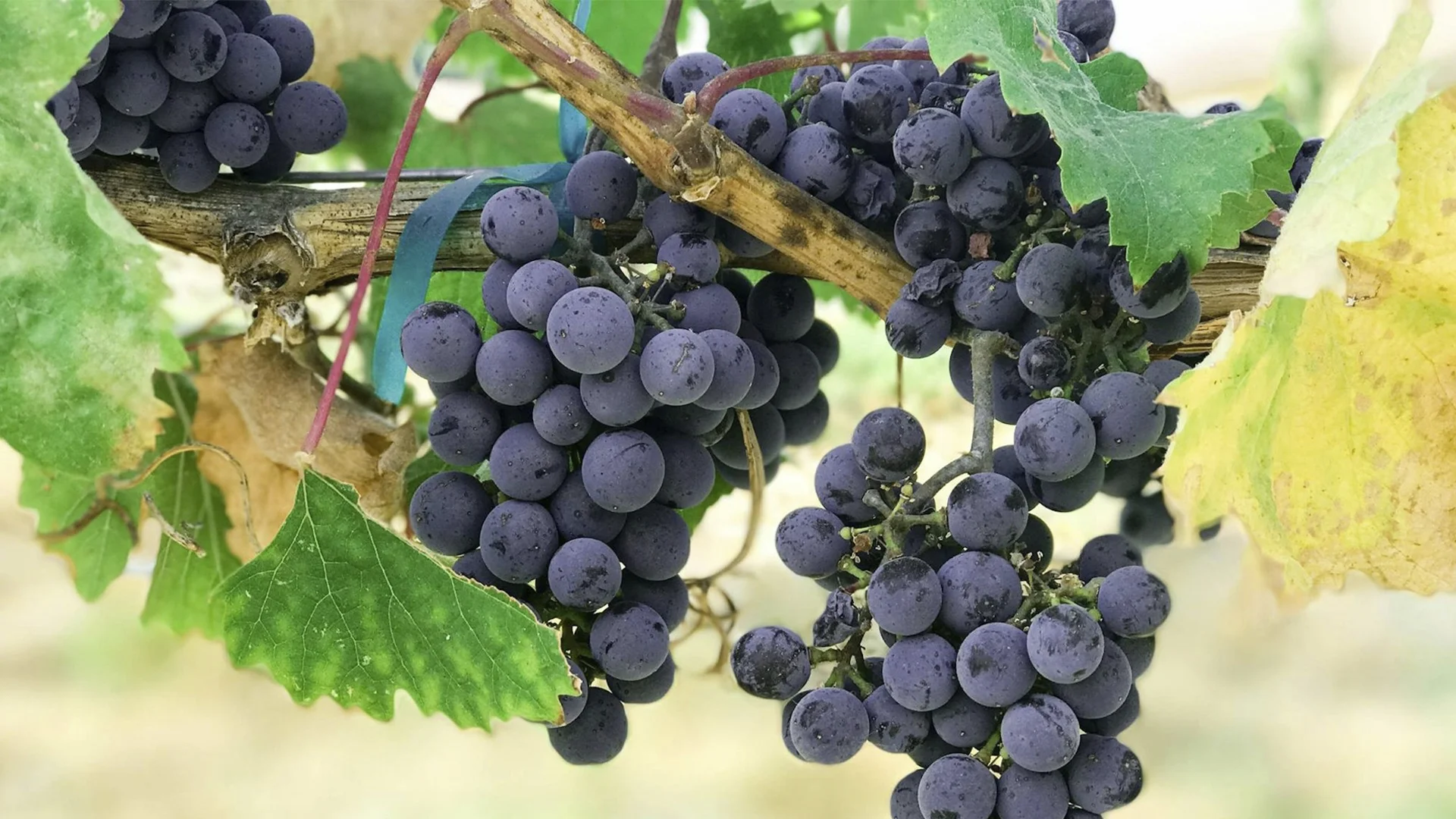
Vidal is a white grape variety known for its resilience and suitability in producing aromatic wines with a balance of fruit and acidity. The grape is best known as a key player in Canadian ice wine production, where it develops concentrated flavours under frozen harvest conditions. Vidal’s versatility also makes it suitable for table wines, from dry to sweet.
Appearance: The grapes are medium-sized with thick, golden skins that become more amber as they ripen, particularly under cold conditions for ice wine.
Aroma and Flavor Profile: Vidal wines often exhibit aromas of apricot, peach, and citrus, with notes of honey and tropical fruit. In ice wines, flavours become more concentrated, showing intense ripe fruit, pineapple, honey, and marmalade qualities. Certain dry styles of Vidal Blanc, especially in regions like Missouri, exhibit noticeable acidity, which complements the fruitiness and can lead to a prolonged finish.
Sugar and Acid Levels: Vidal grapes tend to develop high sugar levels, especially when harvested late in the season for ice wine. The grape retains a natural acidity, balancing the sweetness in dessert wines and bringing freshness to table wines.
Style Versatility: While Vidal is most famous for ice wine, it can be used to produce dry, off-dry, and slightly sweet table wines. Its natural acidity makes it suitable for various wine styles, though it shines best when used for sweet, late-harvest, and ice wines.
Aging Potential: Vidal ice wines have excellent aging potential, often developing additional complexity and richness over a decade or more. Dry Vidal wines are typically consumed young to retain their fresh, fruity qualities.
Food Pairing Recommendations: Vidal pairs well with a variety of foods, from foie gras and blue cheese to fruit-based desserts. Its acidity also complements spicy dishes and savoury flavours, making it a versatile choice for food pairing.
Vidal has become synonymous with ice wine, particularly in Canada, where it is valued for its ability to retain acidity and develop rich flavours under extreme harvest conditions. Its popularity continues to grow as ice wine gains recognition worldwide for its unique character and quality.
Vidal was developed in France by Jean Louis Vidal in the 1930s through a cross between Ugni Blanc (Trebbiano) and Seibel 4986 (also known as Rayon d’Or), with the intent to create a grape suitable for Cognac production. Albert Seibel, a renowned French viticulturist, created many hybrid varieties in an effort to contain the phylloxera infestation in European grape varietals. However, this hybrid variety found a more prominent role in Canada, where its hardy nature adapted well to the harsh winters required for ice wine production.
Today, Vidal is primarily cultivated in Canada, particularly in Ontario, where it is used to produce ice wine. The Finger Lakes region in New York State is also a notable area for Vidal cultivation in the United States. There are smaller plantings in New York State and some parts of France, though it is largely overshadowed by more traditional French varietals there. Vidal’s popularity in Canada has made it an iconic grape within Canadian winemaking, especially in colder wine-growing regions. This grape variety thrives in cold climates, emphasizing its winter hardiness and high sugar production capabilities, making it suitable for ice wine production.
Historical Importance and Prominence: Vidal has become integral to Canadian viticulture, especially in Ontario, where it dominates ice wine production. Vidal Blanc grapes, known for their winter hardiness and versatility in producing both dry and sweet wines, particularly ice wines, have helped Canada gain global recognition as a premier producer of ice wine, contributing significantly to the country’s wine exports.
Key Wine-Producing Regions: Ontario, particularly the Niagara Peninsula, is the epicentre for Vidal production. British Columbia also produces Vidal ice wines, though in smaller quantities.
Stylistic Variations and Quality Levels: Canadian Vidal ranges from crisp, fresh table wines to luscious, concentrated ice wines. The highest quality examples come from the colder climates of Ontario, where freezing temperatures allow Vidal to reach its full potential for ice wine.
Global Distribution and Cultivation: Outside of Canada, Vidal, a white hybrid grape variety produced from Ugni Blanc and Rayon d'Or, is grown widely in New York State and occasionally in France, though its use in ice wine production is far less common. This white hybrid grape variety is known for its adaptability to cold climates. In France, Vidal is often used in small quantities in table wines.
Notable Examples and Regional Interpretations: In New York, Vidal is used for both dry and sweet wines, though it lacks the same reputation for ice wine as in Canada. France’s use of Vidal is limited, primarily in blends for local consumption rather than in premium ice wine production.
Impact on Local Wine Cultures: In Canada, Vidal is celebrated as a core component of the country’s wine identity. It has played a central role in establishing Canadian ice wine as a high-quality export product, bringing international attention to Canadian wine.
High-Quality Examples: High-quality Vidal Blanc ice wines are known for their concentrated flavours and balance of sweetness and acidity. Vidal Blanc, a productive white hybrid grape variety, is notable for its thick skin and resistance to fruit rots, making it ideal for late harvest and ice wine production. Producers often focus on purity and expression of the grape’s fruit and floral notes, the primary goal in crafting wines that showcase the unique characteristics of Vidal Blanc in an ice wine style.
Tasting Notes: Typical tasting notes for Vidal Blanc ice wines include intense aromas of tropical fruit, honey, apricot, and peach, with a luscious, rich texture balanced by vibrant acidity. The wines have a characteristic long, satisfying finish, often with hints of caramel or marmalade.
Winery Profiles: Notable producers of Vidal Blanc grapes and wines in Canada include Inniskillin, Peller Estates, and Jackson-Triggs, all of which are celebrated for their high-quality ice wines. Seyval Blanc, like Vidal Blanc, can exhibit notable acidity levels and share similar characteristics in their wine profiles, especially when it comes to producing wines with bright fruit flavours and balanced sweetness. These wineries have helped establish Vidal as a top-ice wine grape through meticulous vineyard management and winemaking techniques.
Philosophy and Winemaking Practices: Many top producers emphasize sustainable viticulture and careful vineyard practices, especially for ice wine production, which requires precise timing for harvest. The grapes are often hand-picked at temperatures of -8°C or lower to ensure optimal concentration of sugars and flavours.
Awards and Recognition: Vidal ice wines from Canada have won numerous international awards, showcasing their quality and placing them alongside some of the world’s best dessert wines. These accolades have contributed to the grape’s reputation and the rise of Canadian ice wine on the global stage.
Vidal is a distinctive grape that has found its place in the world of wine through the production of iconic ice wines, particularly in Canada. With its ability to retain high acidity and develop intense flavours in freezing conditions, Vidal has become synonymous with high-quality ice wine. As Canadian producers continue to push the boundaries of ice wine production and explore new styles, Vidal’s future looks bright, with potential for continued growth and recognition on the global stage.





























































































.webp)

.webp)





Are you interested in
collaborating with us?